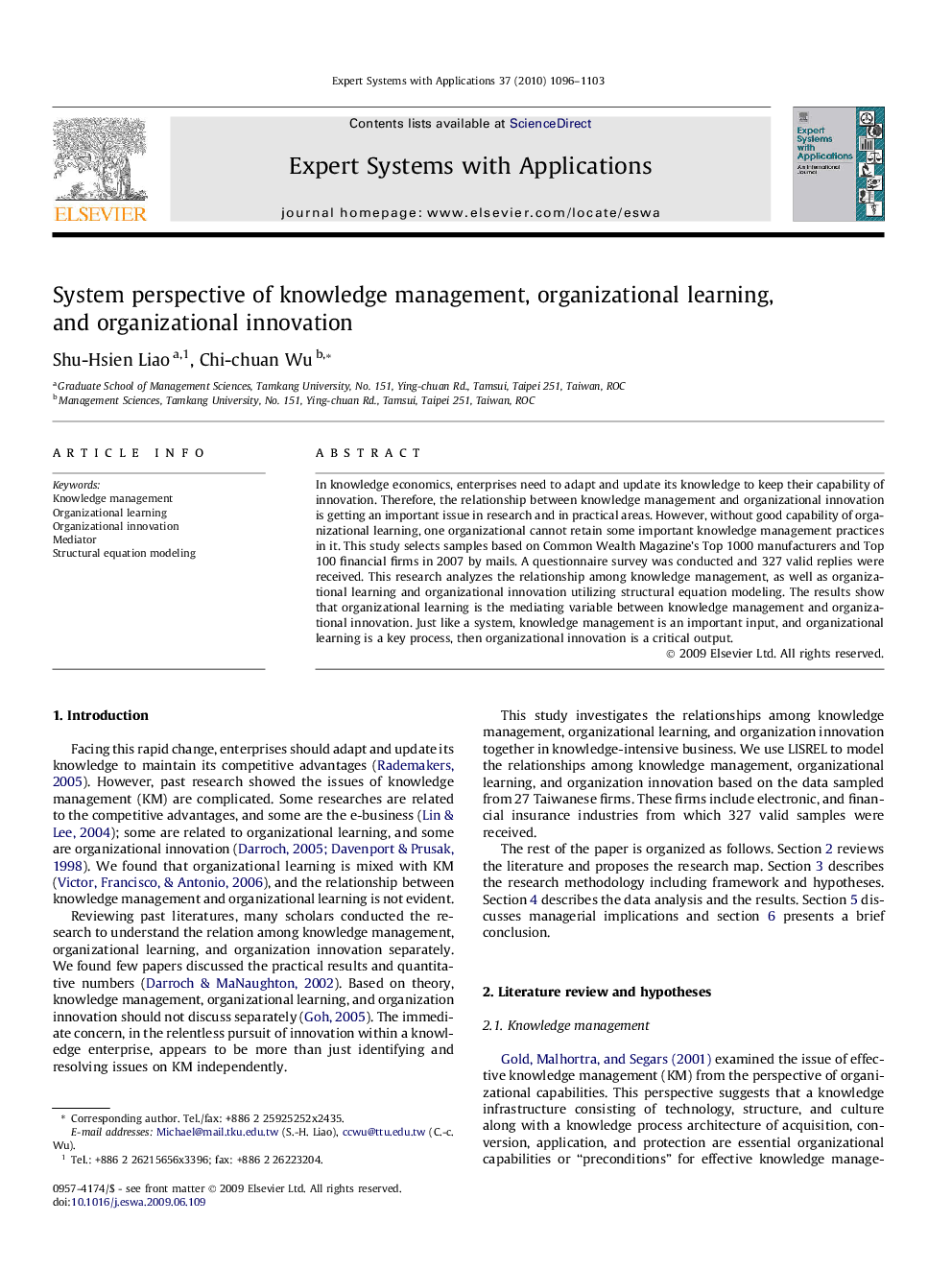| کد مقاله | کد نشریه | سال انتشار | مقاله انگلیسی | نسخه تمام متن |
|---|---|---|---|---|
| 387089 | 660896 | 2010 | 8 صفحه PDF | دانلود رایگان |
واژه های کلیدی
1. مقدمه
2. بررسی متون و فرضیه ها
1.2 مدیریت دانش
2.2 نوآوری سازمانی
3.2 یادگیری سازمانی
شکل 1: دیدگاه سیستم
شکل 2. چارچوب تحقیق
3. روش تحقیق
1.3 نمونه
2.3 سنجش
شکل 3. نقشه تحقیق
جدول 1. آمار توصیفی برای نمونه ها.
4. نتایج
1.4 تجزیه و تحلیل همبستگی
جدول 2. معیارها، انحرافات استاندارد و همبستگی بعد تحقیق.
2.4 مدل اندازه گیری
شکل 4. مدل نظری.
جدول 3. شاخص تجزیه و تحلیل عامل تایید کننده.
جدول 4. قابلیت اطمینان و اعتبار همگرا.
3.4 مدل ساختاری
جدول 5. اعتبار تشخیصی
جدول 6. برآورد پارامترهای ساختاری و شاخص های میزان انطباق.
جدول 7. رابطه مستقیم و غیر مستقیم
5. بحث
1.5 بحث
2.5 مفهوم عملی
3.5 محدودیت های احتمالی
4.5 آثار آینده
6. نتیجه گیری
In knowledge economics, enterprises need to adapt and update its knowledge to keep their capability of innovation. Therefore, the relationship between knowledge management and organizational innovation is getting an important issue in research and in practical areas. However, without good capability of organizational learning, one organizational cannot retain some important knowledge management practices in it. This study selects samples based on Common Wealth Magazine’s Top 1000 manufacturers and Top 100 financial firms in 2007 by mails. A questionnaire survey was conducted and 327 valid replies were received. This research analyzes the relationship among knowledge management, as well as organizational learning and organizational innovation utilizing structural equation modeling. The results show that organizational learning is the mediating variable between knowledge management and organizational innovation. Just like a system, knowledge management is an important input, and organizational learning is a key process, then organizational innovation is a critical output.
Journal: Expert Systems with Applications - Volume 37, Issue 2, March 2010, Pages 1096–1103
